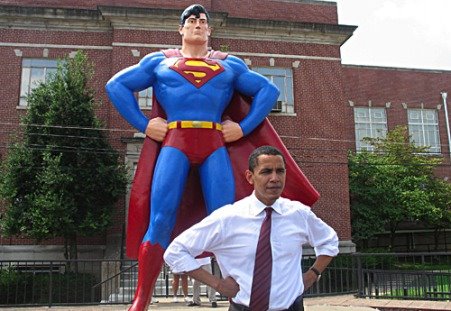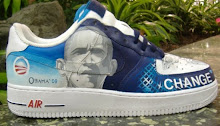"Is John McCain calling Barack Obama a dumb blonde?"
This is the lead question by Garance Franke-Ruta in her funny review of the new John McCain ad for the Washington Post's blog. For those readers who haven't seen the video, its purpose seems to be that Obama is more like Paris Hilton than Paris France--that he is all show and no substance.
Not long ago, SemiObama contributor Dean Rader published an op-ed in The San Francisco Chronicle that explored the importance of Obama semiotics in popular culture, ultimately making the case that Obama was more of an icon than a celebrity. One of Rader's assertions was that figures like President Bush and Paris Hilton are popular but not icons:
Yesterday's advertisement compares Obama to both Hilton and Brittney Spears, with a particular focus on his celebrity. As Franke-Ruta notes, it is difficult to figure out what, exactly, the McCain camp is arguing. Is it that Obama is too popular? Is it that he is vapid? That he's a bad parent? That he shouldn't have made those sex films? Maybe it was that time he kissed Madonna?
This is the lead question by Garance Franke-Ruta in her funny review of the new John McCain ad for the Washington Post's blog. For those readers who haven't seen the video, its purpose seems to be that Obama is more like Paris Hilton than Paris France--that he is all show and no substance.
Not long ago, SemiObama contributor Dean Rader published an op-ed in The San Francisco Chronicle that explored the importance of Obama semiotics in popular culture, ultimately making the case that Obama was more of an icon than a celebrity. One of Rader's assertions was that figures like President Bush and Paris Hilton are popular but not icons:
What it means to be an icon in today's visually oriented world defies easy explanation. George W. Bush's image is everywhere, as is Paris Hilton's but neither is an icon. Both are popular and both carry cachet, but being iconic in an icon-obsessed world is about more than mere presence. It's about stature and transcendence. It's about transformation, which means there is a big difference between being a celebrity and being an icon. The former merely indicates media omnipresence; it is value free.
Yesterday's advertisement compares Obama to both Hilton and Brittney Spears, with a particular focus on his celebrity. As Franke-Ruta notes, it is difficult to figure out what, exactly, the McCain camp is arguing. Is it that Obama is too popular? Is it that he is vapid? That he's a bad parent? That he shouldn't have made those sex films? Maybe it was that time he kissed Madonna?












